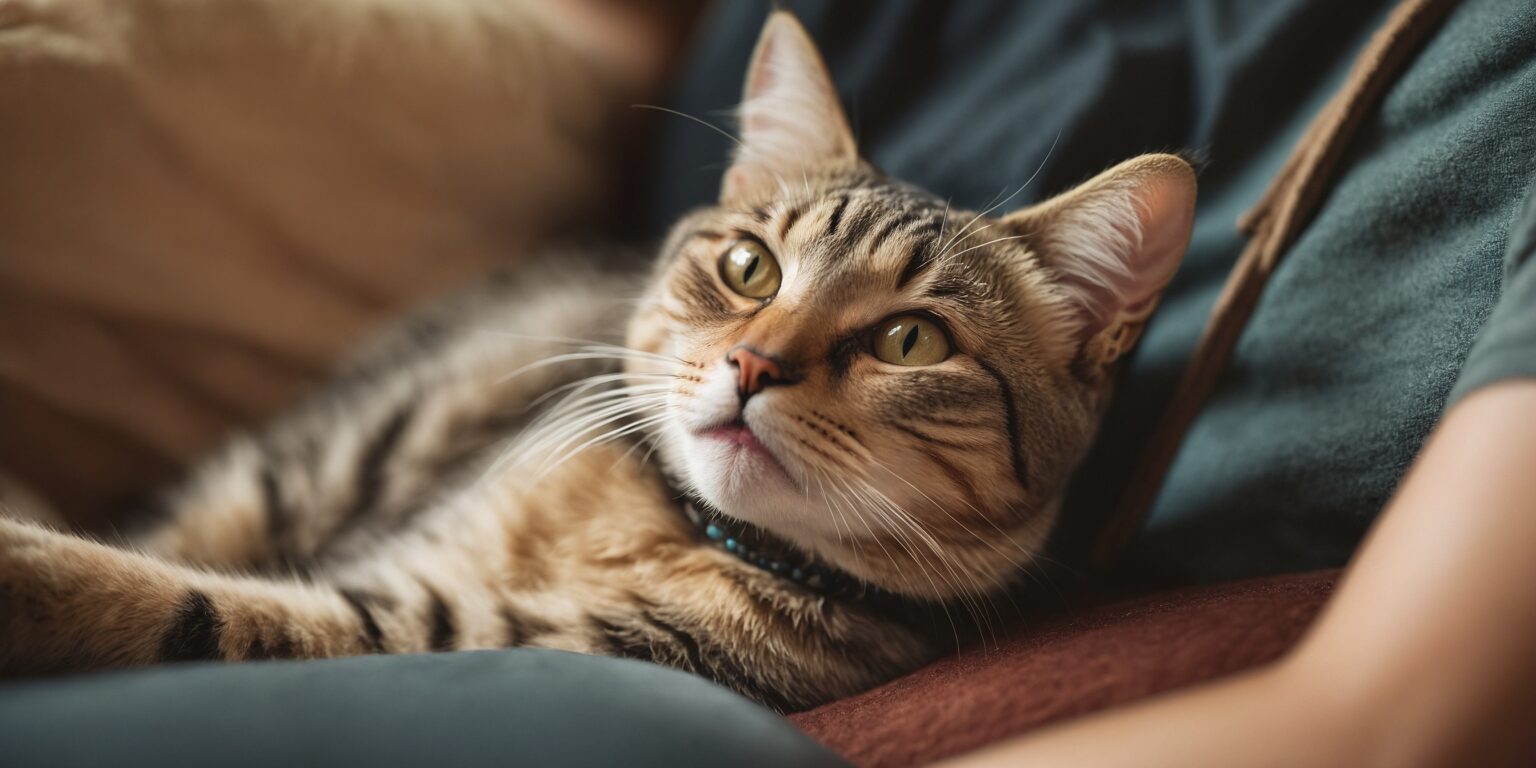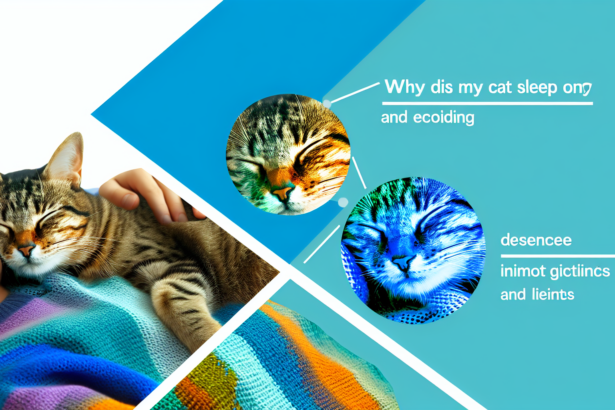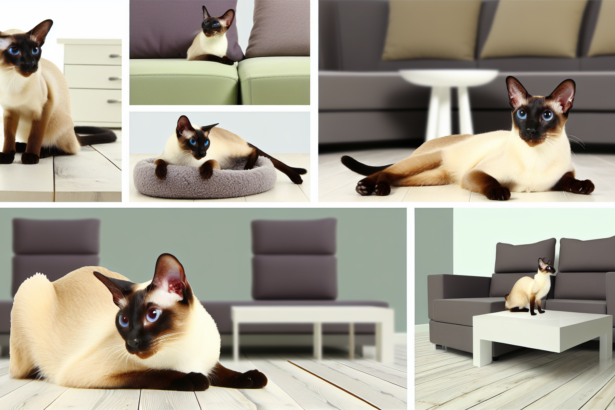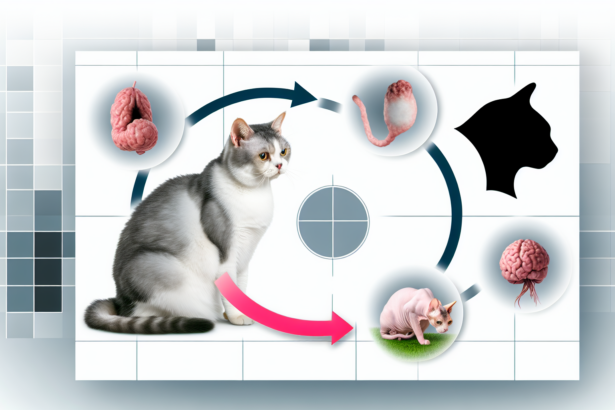Why does my cat drool? Understanding this curious habit
Your cat curls up on your lap, starts purring like a tiny engine… and then, a little string of drool appears. Adorable or alarming? Both can be true. Here’s how to tell the difference, what to watch for, and how to keep your whiskered friend comfortable.
- Why does my cat drool? Understanding this curious habit
- Five common reasons your cat drools
- Your cat is happy and relaxed
- Stress or anxiety
- Dental or mouth problems
- Poisoning or irritation
- Other medical conditions
- What to do when your cat drools a lot
- Observe like a pro
- Call your vet without delay
- Prevention you can start today
- One practical tip, one mistake, one fun fact
- FAQ
When drooling is perfectly normal
Some cats drool when they’re deeply relaxed, blissfully purring, or anticipating a favorite treat. Think of it as their version of melting into the moment.
- Typical “happy drool”: clear, light, and occasional, often paired with kneading, half-closed eyes, and that slow, satisfied blink.
- Common situations: cuddle time, gentle grooming, a warm nap in the sun, or a long petting session.
- What to do: enjoy the cuddle. Pop a washable throw where your cat snoozes and keep a soft cloth nearby.
Curious why your cat goes into bliss-mode in the first place? Explore why cats purr and how it ties into those cozy drool moments.
How to spot excessive drooling
A little drool is fine; a soggy chest is not. If your cat suddenly produces salivation that’s abundant, persistent, or foamy, take note.
- Red flags: drooling with bad breath, pawing at the mouth, reluctance to eat, vomiting, lethargy, or bleeding gums.
- Normal vs. not: thin, occasional drool during relaxation is normal; continuous drool soaking fur or forming puddles is not.
- Emergency: sudden, heavy drool with vomiting, tremors, or trouble breathing needs prompt veterinary care.
Do some breeds drool more?
Short answer: sometimes. Cats with flatter faces or plush jowls (like Persians or some British Shorthairs) may drool more when fully relaxed, and big softies like Maine Coons can, too. Their facial shape plus deep relaxation can tip the balance toward a tiny trickle.
Five common reasons your cat drools
Your cat is happy and relaxed
- What happens: deep relaxation and purring increase saliva flow. It’s the feline equivalent of “I’m in heaven.”
- What it looks like: soft eyes, slow blinks, biscuit-kneading paws, and a comfy sprawl.
- What to do: offer a cozy blanket and enjoy the moment—no action required.
Stress or anxiety
Nerves can trigger nausea and excess saliva. Common triggers include travel, loud noises, routine changes, or tense interactions with other pets.
- Clues: hiding, flattened ears, wide pupils, tail tucked, refusing food, and yes—drool.
- How to help: create a calm safe room, use feline pheromone diffusers, keep routines predictable, and offer gentle play to release tension.
- Extra tip: car drool often equals motion sickness—ask your vet about safe anti-nausea options.
Not sure if anxiety is playing a role? Learn to decode the signs of stress in cats and how to soothe them.
Dental or mouth problems
Oral pain is a big drool trigger. Think gingivitis, resorptive lesions, ulcers, or a stuck foreign body (a grass awn can be sneaky!).
- Watch for: bad breath, dropping food, chewing on one side, red or swollen gums, pawing at the mouth, or blood-tinged drool.
- What helps: a veterinary dental exam, professional cleaning if advised, and a home routine (tooth brushing with cat-safe paste, dental toys, water additives as recommended by your vet).
- Prevention: annual checkups and early dental care pay off—your cat’s breath (and comfort) will thank you.
For a broader view of mouth pain and more, browse common cat health problems and what to do.
Poisoning or irritation
Certain plants, household cleaners, essential oils, and some human foods can irritate the mouth or cause systemic poisoning.
- Never ignore: sudden drool with vomiting, tremors, wobbliness, or collapse.
- Common hazards: lilies and philodendron, bleach and other cleaners, essential oils, chocolate, and human medications.
- First steps: remove the suspected toxin, rinse the mouth with a little water if safe to do so, and call your vet or a poison hotline immediately.
One common culprit? Chocolate. Here’s why chocolate is dangerous for cats—and what to do if it happens.
Other medical conditions
Nausea (from kidney disease or gastrointestinal issues), throat or respiratory infections, pain, or fevers can all lead to drooling.
- Look for: appetite changes, weight loss, unusual thirst/urination, nasal discharge, or an off-color attitude.
- Next move: if drool is new, heavy, or paired with any of these signs, book a vet visit quickly.
What to do when your cat drools a lot
Observe like a pro
- Note when it happens, what your cat was doing, how much drool you saw, and any other symptoms.
- Take a short video—vets love clear visuals.
- Track appetite, water intake, litter box habits, and energy levels.
Call your vet without delay
- If drool is sudden, abundant, persistent, or paired with other symptoms, seek veterinary advice promptly.
- Share your notes and video for a faster, clearer diagnosis.
- Keep your cat calm and warm while you wait for the appointment.
Prevention you can start today
- Adopt a gentle oral care routine: kitty toothpaste on a finger brush a few times a week, plus dental treats or toys.
- Reduce stress with predictable routines, safe hideouts, and daily play.
- Cat-proof your home: secure chemicals and meds, and check plants before bringing them in.
One practical tip, one mistake, one fun fact
- Practical tip: teach a quick “chin up” cue. Briefly lift your cat’s chin, peek at the gums, then reward with a lick mat. Two seconds, lots of praise—over time, mouth checks become stress-free.
- Mistake to avoid: don’t give human medication to “calm” nausea or pain. Many are toxic to cats and can worsen drooling or cause severe harm. Always ask your vet first.
- Fun fact: some cats drool when they knead because it echoes kittenhood nursing—pure nostalgia in liquid form.
FAQ
Is it normal if my cat drools when purring?
Yes—light, clear, occasional drool during relaxed purring can be perfectly normal. It should stop once the cuddle session ends.
Why is my cat suddenly drooling a lot?
Sudden, heavy drooling can signal mouth pain, nausea, or toxin exposure. Look for other symptoms and contact your vet quickly.
Can drooling mean poisoning?
It can. Drooling with vomiting, tremors, or weakness is an emergency. Remove any possible toxin and call your vet or a poison hotline immediately.
How can I reduce stress-related drooling?
Provide a quiet safe space, keep routines steady, try pheromone diffusers, and use gentle play. Ask your vet about car sickness support if travel is the trigger.







